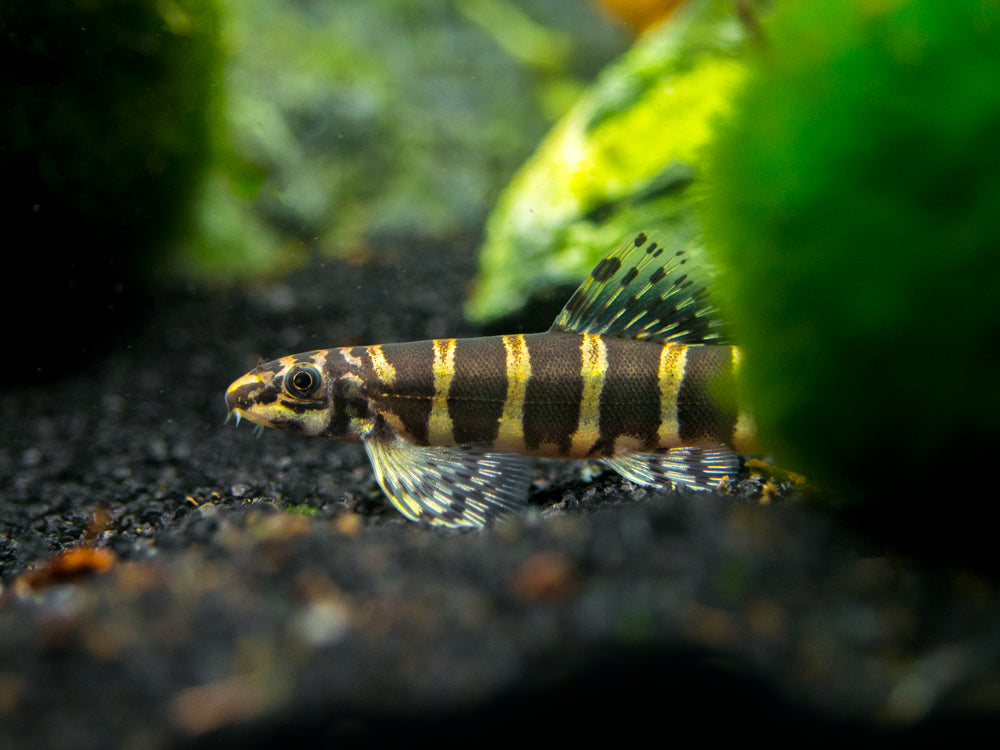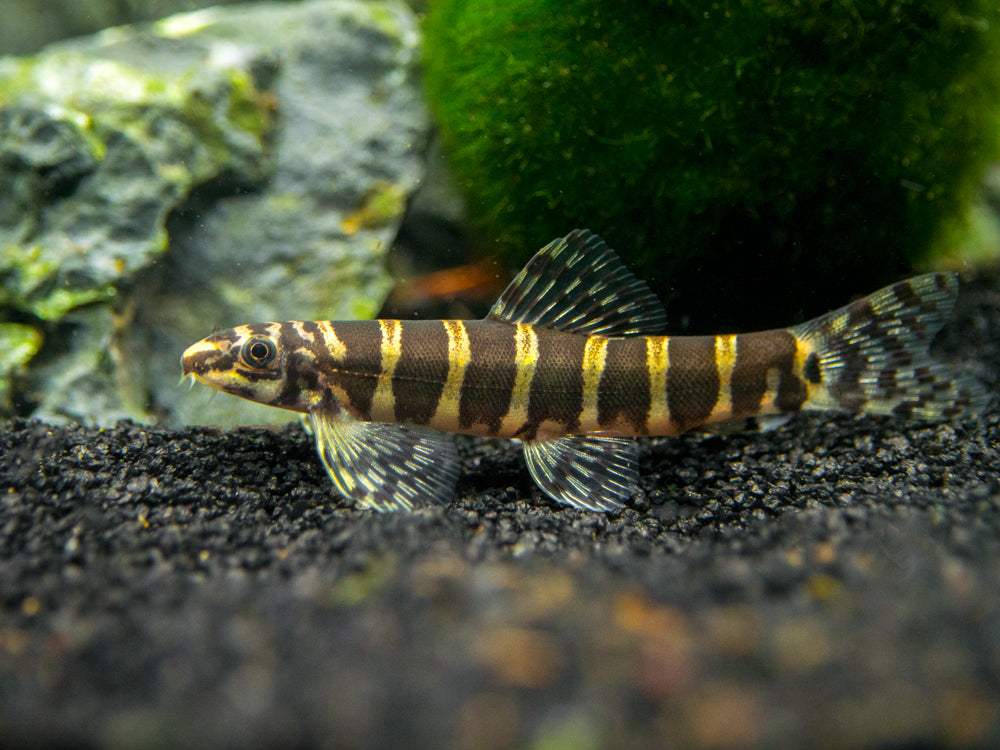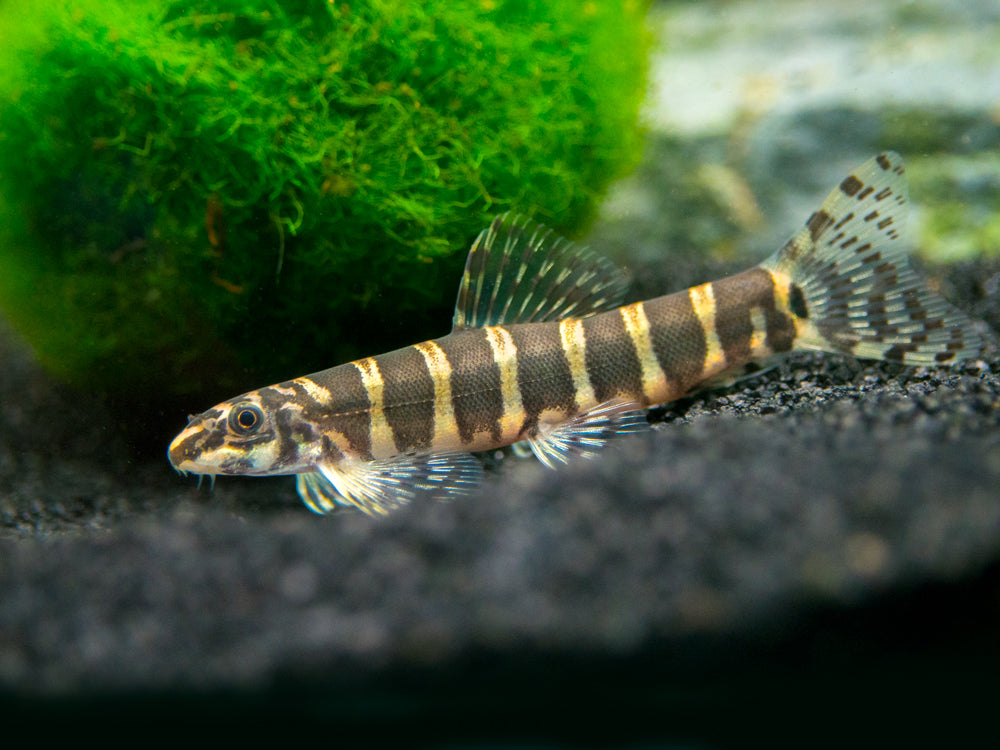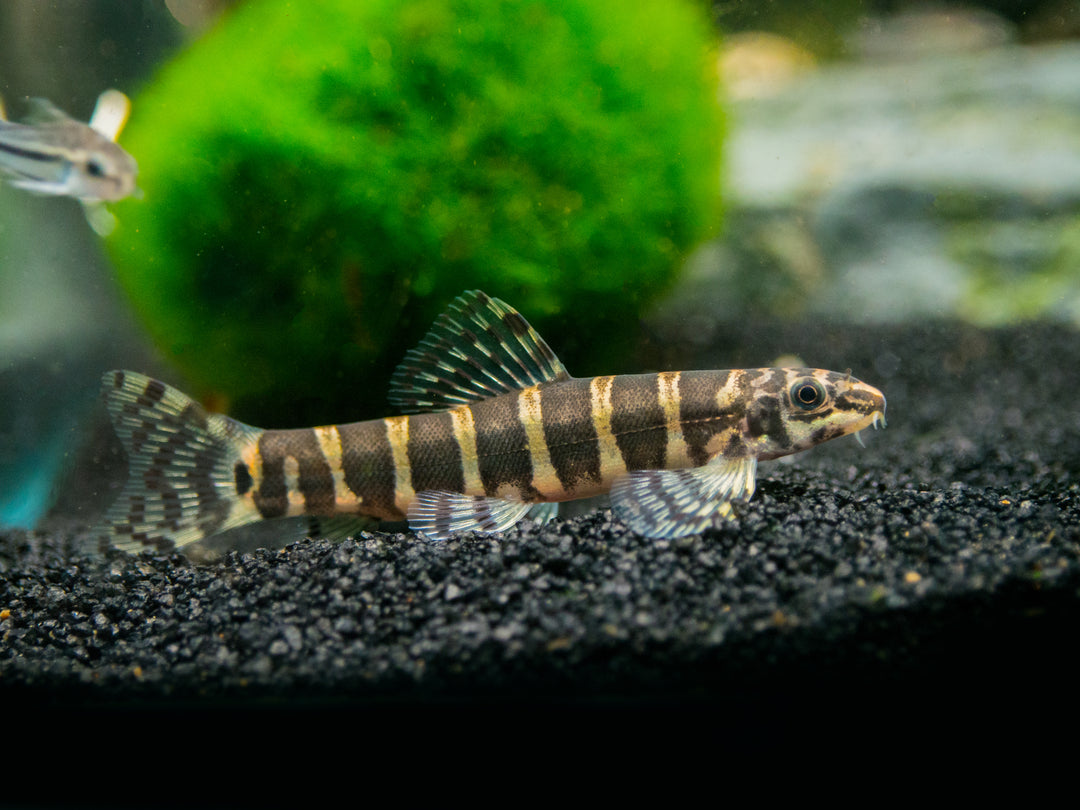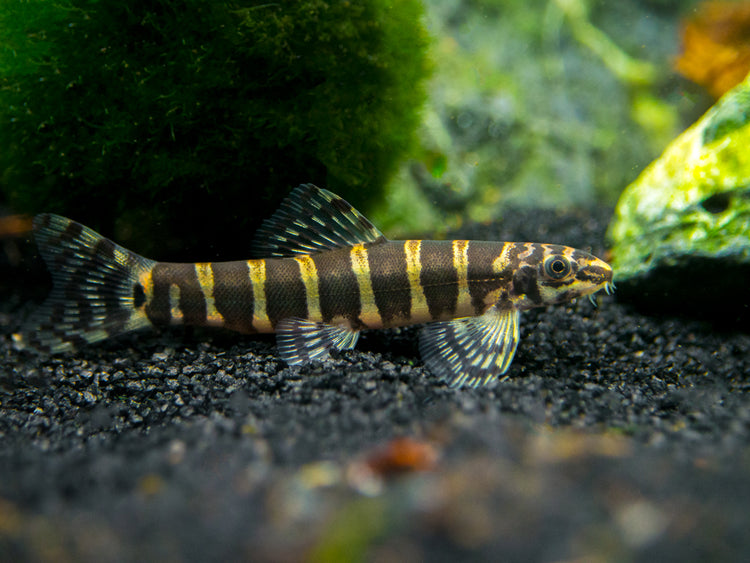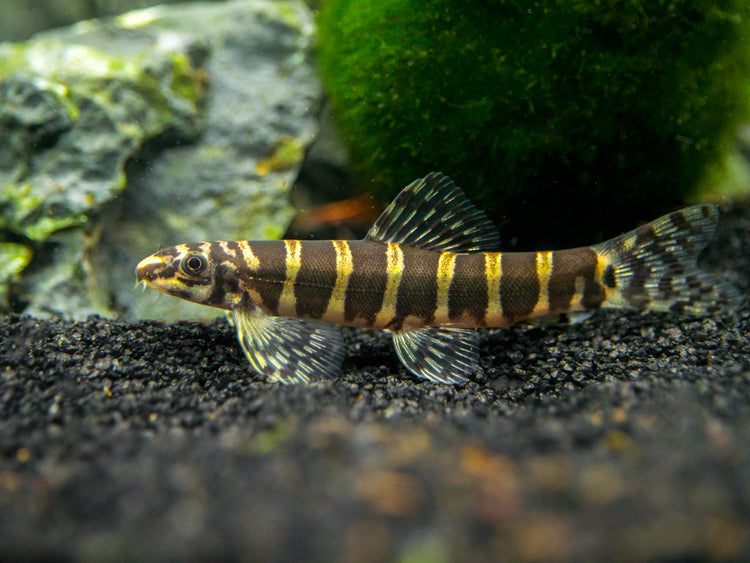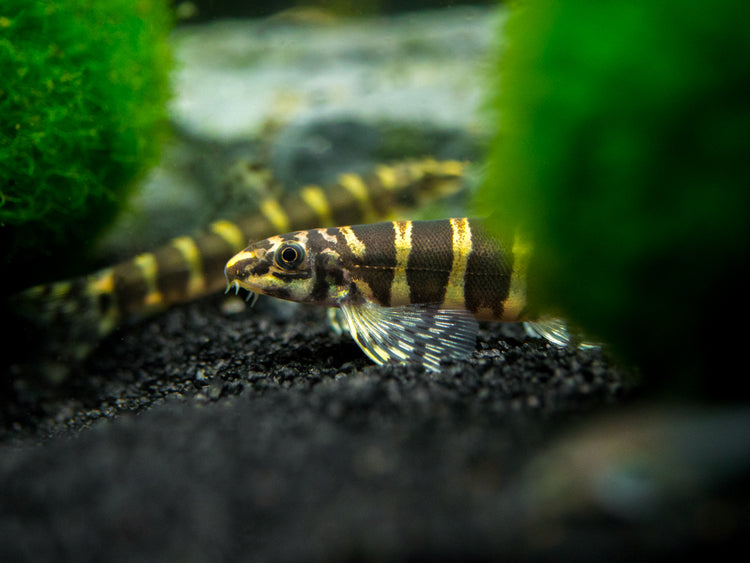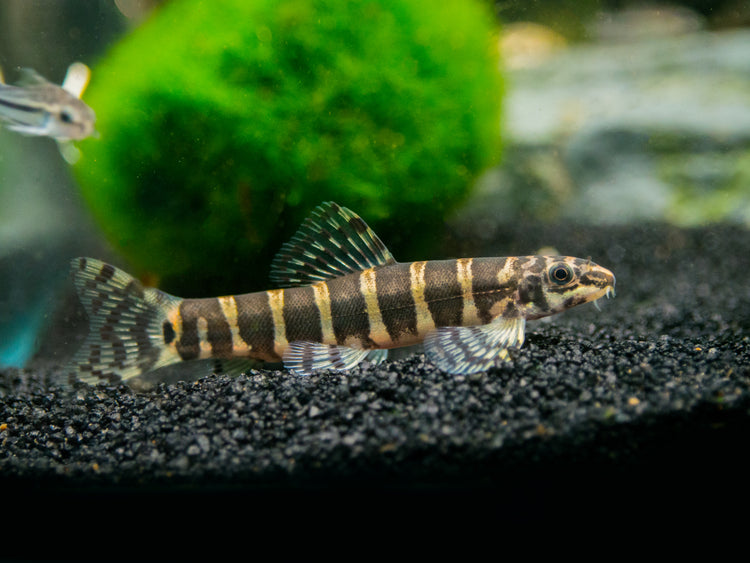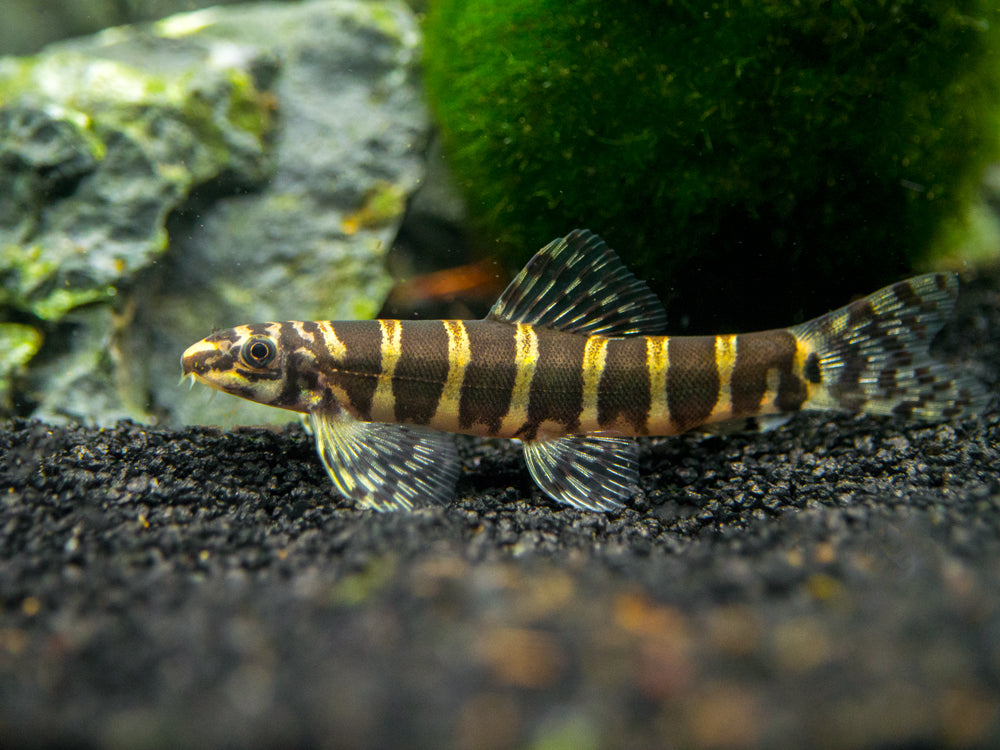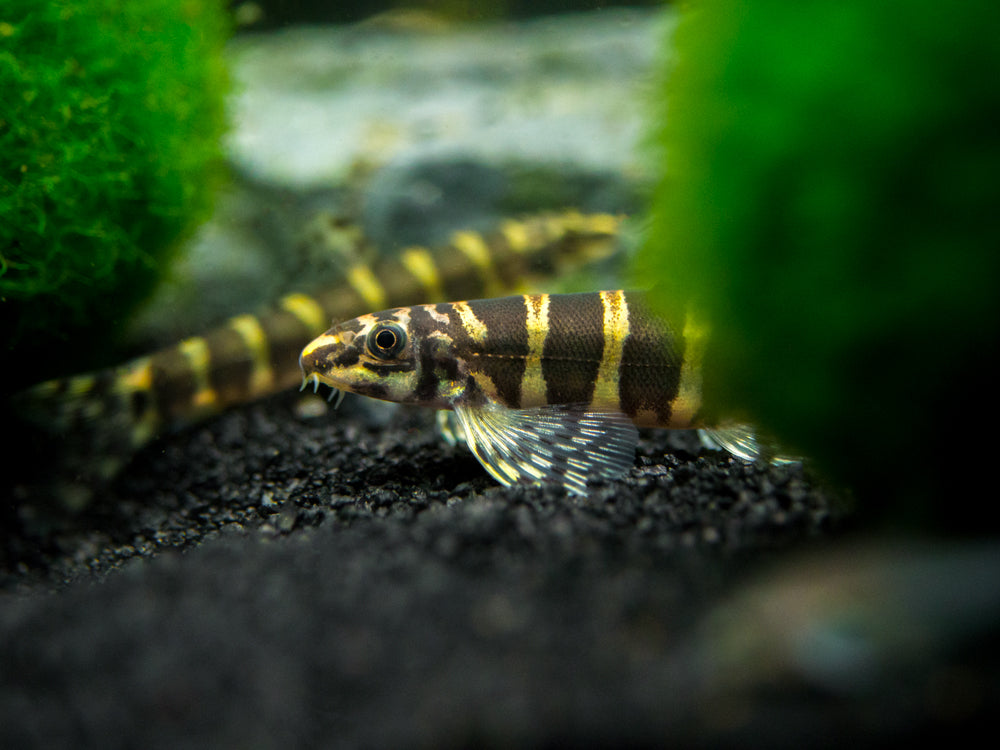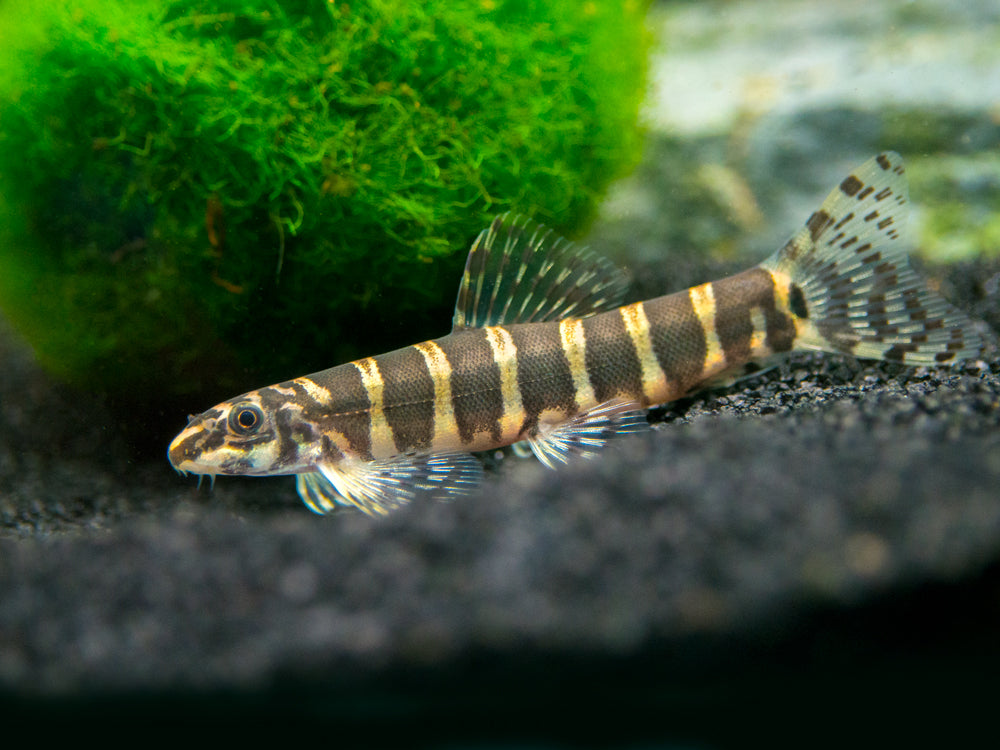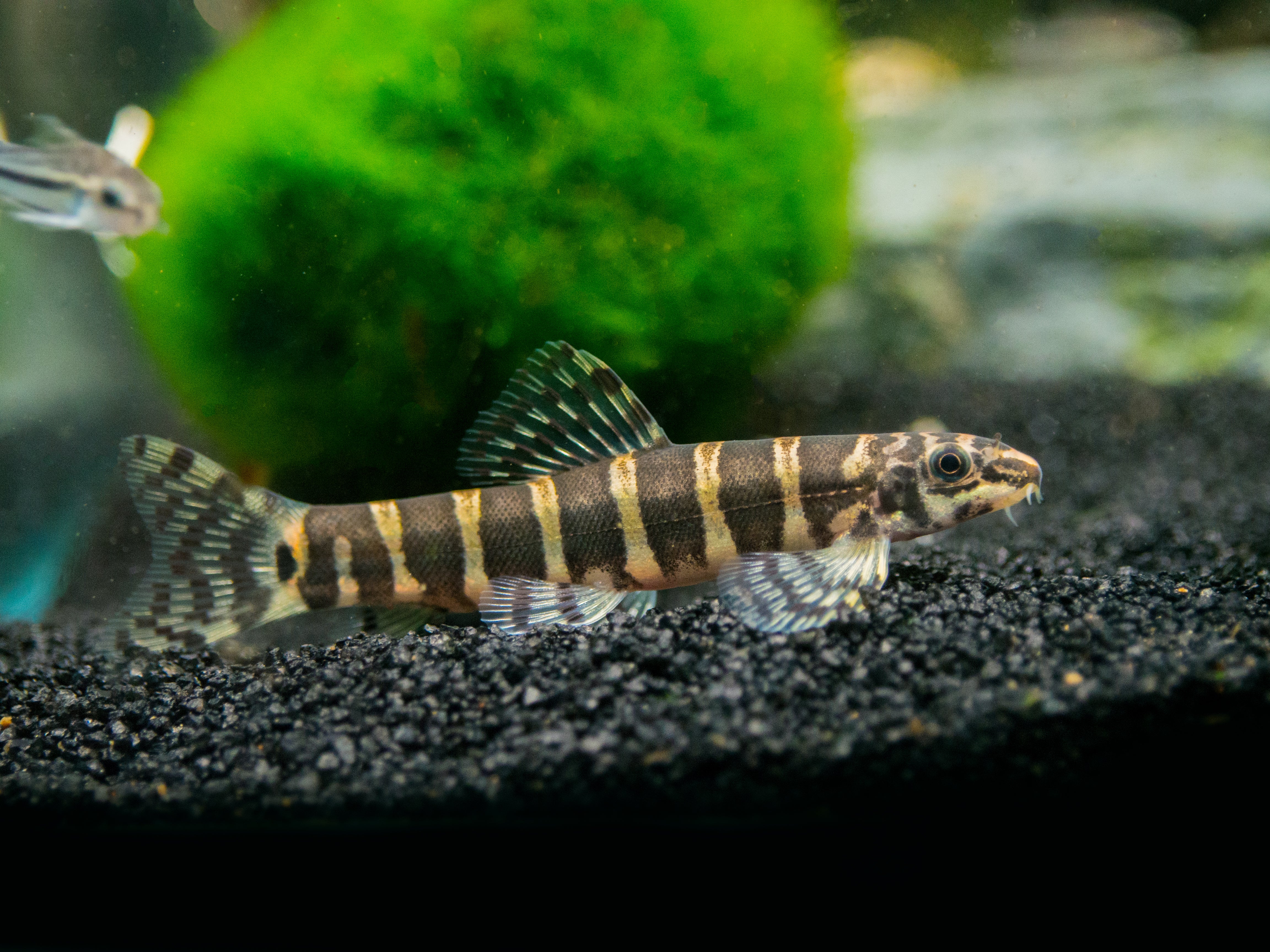Serpent Loach/Botia (Serpenticobitis octozona)
- In stock, ready to ship
- Backordered, shipping soon
* For the safety of our animals, we now ship live fish exclusively via FedEx 1 Day Air. If your order contains this item, you will only see FedEx 1 Day Air as a shipping option during checkout *
The Serpent Loach is a fascinating bottom-dweller that is full of energy and activity. Its beautiful appearance and personality add constant activity and appeal to the aquascape, especially in the planted aquarium. It is a superb candidate for removing pest snails, scavenging, and being a generally entertaining species!
The Serpent Loach (Serpenticobitis octozona), is a nano-sized member of the loach/botia family indigenous to Laos. It is an exceptionally active and visually attractive species that is generally peaceful, especially when kept in groups of 6-8 or more in an amply-sized aquarium with plenty of cover and decor. Its small size also makes it ideal for the planted aquarium, where it will diligently seek out microinvertebrates and "pest snails" as prey, keeping nearly all of the planted tank "pest invertebrates" at bay or even on-existent.
The Serpent Loach is an omnivorous micropredator requiring a diet of meaty foods regularly supplemented with vegetable and possibly even a small amount of fruit matter. It will often accept high quality dry foods, but its diet should also include regular offerings of live/frozen meaty foods of invertebrate origin. This loach is native to shallow, oxygen rich waters that include terrain covered in biofilm and algae, so it also requires a supplementary amount of vegetable matter.
The aquarium of the Serpent Loach should include plenty of rockwork and driftwood. It also must include oxygen-rich water and significant areas of high water flow. This fish can even be a prime candidate for river tank setups and can cohabitate nicely with hillstream loaches and Stiphodon gobies as well as other inhabitants of such turbulent waterways. It lives in areas of little plant foliage, but it will be completely at home in a heavily planted tank as long as oxygenation and water flow are consistently high. Plenty of cover is necessary for this species and will ensure the most activity, best coloration, and least stress. The Serpent Loach is an exceptionally active species that also needs plenty of clear room in the aquarium for swimming and exploring. It exhibits a very sophisticated schooling behavior and social hierarchy where each individual species constantly strives to be the “leader of the school” by swimming to the front of the group. While this behavior may seem aggressive, it generally involves no real fighting and results in an exceptional level of activity. As long as the school includes at least 6-8 specimens, aggression or bullying within the school will be minimal or nonexistent. However, if the Serpent Loach is kept solitaryily or in too small of a group, it can become withdrawn or aggressive.
The Serpent Loach will thrive in a planted aquarium with very clean, well-maintained, high-oxygen water of moderate to high water flow and is generally peaceful with other species of fish, although its boisterous nature can be stressful to other exceptionally passive fish in smaller tanks. It is an excellent tankmate for most rasboras, tetras, danios, livebearers, and other schooling fish and larger invertebrates (such as Amano Shrimp, Bamboo and Green Lace Shrimp, Vampire Shrimp) that inhabit the middle and upper levels of the water column. In a spacious tank, it can also be kept with other bottom-dwelling fish that are not too timid to be outcompeted at feeding time. The Serpent Loach, like most typical loaches, often preys on tiny worms, shrimp, and snails. This is very useful in helping reduce “pest snails,” but must also be considered with ornamental snails and shrimp. While the Serpent Loach is not likely to directly prey on larger Mystery, Nerite, Trapdoor, and other snails, it may incessantly harass them in a smaller tank. This can cause extreme stress and starvation in the harassed snails over time. Please exercise care and observation if you are considering keeping the Serpent Loach with ornamental snails or shrimp. We do not recommend keeping this fish with dwarf shrimp, and we recommend caution in keeping it with larger shrimp in a smaller tank.
The Serpent Loach is a truly magnificent highlight of the aquarium under the right conditions. Its personality, appearance, and activity make it a truly exceptional species that is uniquely unrivaled.
What We Like About This Fish:
- Beautiful 8-bar pattern of black and tan/cream coloration
- Incredibly bold and active fish that almost never stops swimming and foraging
- Very hardy and adaptable in aquariums with oxygen-rich water
- Very active in middle and lower levels of the aquarium
- Excellent candidate for most planted aquariums
RECOMMENDED TANK PARAMETERS:
- Temperature: 73.4° - 78.8° F (23° - 26° C). Care should be exercised to maintain high dissolved oxygen levels, especially at the higher end of this range.
- pH: 6.0-7.0
- KH: 8 - 12 dKH
- Minimum tank size: 30+ gallons for a small group, although 40+ gallons is more ideal due to the exceptional activity of this fish.
CARE GUIDELINES:
- Diet: Omnivore. Live and frozen meaty foods, especially frozen foods such as cyclops, Daphnia, Artemia, Tubifex, and bloodworms will all be readily accepted. High quality dry foods are also likely to be accepted. Some plant and fruit matter, such as cucumber, zucchini, blanched spinach, and melon, should also be offered.
- Social behavior: MUST be kept in schools of 6-8+ specimens. This species exhibits complex schooling behavior and will often become withdrawn or aggressive when kept solitarily or in smaller groups.
- Origin: Laos
- Average adult size: 2 inches (5 cm)
- Average purchase size: 1-2 inches (2.5 - 5 cm)
All Aquatic Arts brand plants and animals come with a 100% live arrival guarantee, plus free email support!
For the safety of our animals, we only ship live fish, crabs, and select other inverts exclusively via UPS 1 Day Air. If your order contains this item, you will only see UPS 1 Day Air as a shipping option during checkout. If other items are in your cart that can ship with 2 day or standard shipping options the only shipping method you can still select is UPS 1 Day Air.
UPS 1 Day is a description of the duration of time a shipment will spend in transit once it has been shipped. This does not guarantee the package will be shipped the same or next day from which the order was placed.
Shipping Schedule for this service
Current Handling Time:
1-9 business days
Here at Aquatic Arts, we consider the welfare of the live animals we are shipping to be of the foremost importance. This process is much more involved than simply creating a shipping label and affixing it to a box. Depending on the order, it takes from 4 to 7 people to complete this process properly. We check the weather conditions here where they fly out of the Indianapolis UPS facility and the destination for each shipment. We start early each morning and go through a multi-step process to have the day's shipments prepared in time for the UPS pickup. The volume of orders in our system also affects the processing time. Therefore our stated handling time is 1-9 business days.
Shipping Rate
Pricing is by size of package needed to fill entire order and distance it must travel. It will be calculated at checkout.



